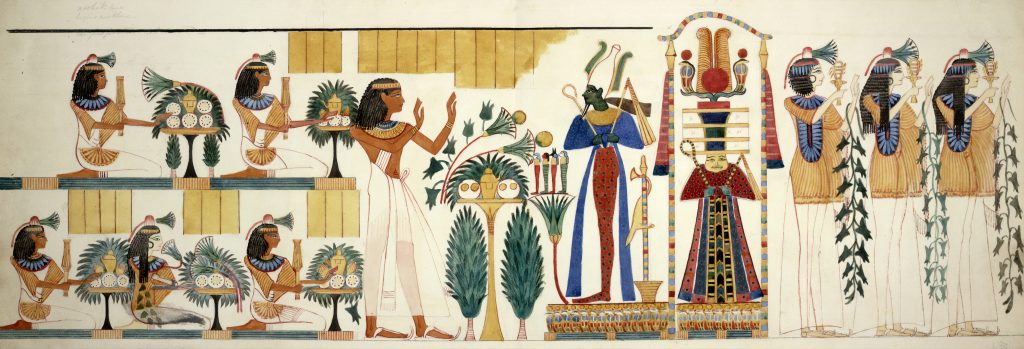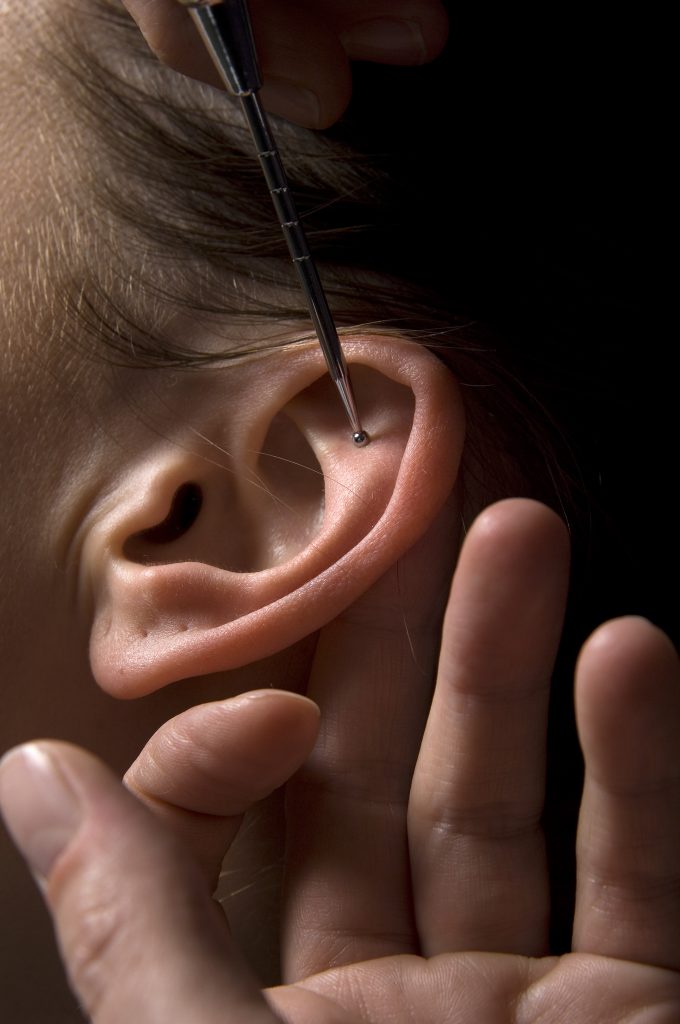Subscribe to the Newsletter
If you are interested in understanding how Traditional Chinese Medicine can improve your life sign up to my newsletter for the latest updates.

There are two main strands to the history of ear acupuncture, Chinese and Western.
The ear is mentioned in Chinese medicine’s most famous book, the ‘Huang di Nei jing Su Wen’ which was written about 2500 years ago.
(Not a very easy book to read, even in translation: you have been warned.) The copy shown is an annotated translation by one of our most able scholars.
Makes it easier. A bit.
The edition that I read when I started acupuncture was called the Yellow Emperor’s Classic of Internal Medicine, by Ilza Veith. It’s now out of print, I think.
I most certainly could have done with the annotated edition by Paul Unschuld.
Chinese tradition puts it as being written much earlier – 4000BC.
Still … whenever it was written doesn’t really matter. The Classic of Internal Medicine is a collection of the wisdom of all the Chinese doctors up to then. It is arranged in the form of a series of discourses between the so-called Yellow Emperor and his chief physician. They probably stuck an extra 1000 years on to its life to make it seem more venerable.
The book doesn’t describe acupuncture in the ear in any detail. However, it showed how the ear was closely involved with the main body organs (eg heart, spleen, lung and kidney). Also, to some extent, how the ear could be used to diagnose or predict disease.
The book also showed how acupuncture channels in the body circulate round or close to the ear.
In the first six centuries AD (or 6 centuries CE, as now more correctly stated), Chinese doctors treated the ear with both acupuncture and moxa. Some texts say the ear was where the main channels of the body came together – a most interesting statement given how we view it now.
Chinese texts in the 17th Century CE showed how moxa on the apex of the ear treated cataracts.
But it wasn’t until the 19th Century CE that parts of the ear were related in detail to parts of the body. This was at a difficult time in China for acupuncture because, due to the increasing influence of Western medicine and science, Chinese lost confidence in their traditional medicine.
The history of ear acupuncture might have been even shorter had anyone taken notice of what happened next.
Indeed, in 1822 the health minister put out an edict forbidding acupuncture to be used any more in Chinese hospitals. (They tried this again several times in the 20th Century.)
Fortunately, rural Chinese took no notice and continued to practise their own ‘folk’ medicines, including acupuncture. Indeed, there is a 1850s report of the ear being cauterised in China to treat sciatica. (Don’t forget this – we’ll come back to it!)

In the picture, the probe is pressing on a point called Shen Men. It’s near where cauterisation for sciatica might be done.
What’s cauterisation? ‘To burn or sear the skin with a hot iron, electric current or caustic solution’: often used on warts in Western medicine.
In the 1930s and 1940s China was engulfed in terrible civil war, then invaded by Japan. Millions died, including many acupuncturists.
Fortunately the history of ear acupuncture didn’t stop there.
Somehow acupuncture continued to be used, despite the previous bans. In 1949 after the communist revolution, Mao TseTung, perhaps realising how poor China was and how much Chinese medicine had to offer, brought it back into the fold.
Those (many of them rural practitioners) who had continued with acupuncture and other forms of Chinese medicine mapped out the main provisions and ideas behind their medicine.
Classical ideas on acupuncture were revived and it became part of orthodox Chinese medicine and culture.
Of course, one should not forget that Chinese medicine is based on the energetic ideas of yin and yang, the five elements and the 8 principles. In this form it had long since spread abroad to Japan, Vietnam and elsewhere. In those countries it continued to develop each in its own way. But even in these other countries, not much time seems to have been spent on ear acupuncture.
Likewise in China, there are few records of how or how much ear acupuncture was used until the French doctor Paul Nogier visited China in 1958.
Paul Nogier’s visit revitalised, indeed probably almost re-invented ear acupuncture in China. However, although recently the Western Scientific approach has been more appreciated, the traditional Chinese medicine based on acupuncture channels, herbs, yin and yang, 5 Elements etc was initially applied to ear acupuncture.
Whether because of this influence of traditional Chinese medical beliefs and systems, or because Nogier’s maps of the ear were poorly translated into Chinese, or because the Chinese have had plenty of people to practise on and therefore to base their own ear acupuncture upon, there are differences between Chinese and Western auricular acupuncture, not least in the position of some points.
It seems to have been the Chinese who realised that specific acupuncture ear points could treat drug addictions. Their ideas on this, refined to some extent, are often used in the West.
Since the 16th Century CE there had been sporadic reports of acupuncture by Westerners visiting China. Interest waxed and waned but cauterising the ear for sciatica seems to have been known about in various countries for centuries.
Western interest in acupuncture was re-awakened by the French consul to China between 1907 and 1927, Georges Soulié de Moran.
On his return to France he published L’Acupuncture chinoise and subsequently taught many doctors in Europe. So there was increasing awareness of acupuncture in general, but not of ear acupuncture.
Then an interesting thing happened: the Western equivalent of those rural practitioners in China where acupuncture had been in use despite repression. A lay practitioner in France, Mme Barrin, had learned it from her father. He, in turn, when working as a physician in Indochina had learned it from the Chinese. Mme Barrin was using ear cauterisation to treat sciatica. These cauterisations left scars in the ear.
The history of ear acupuncture in the West really got going again in 1950. A French doctor, Paul Nogier, discovered Mme Barrin’s ear cauterisation scars in some of his patients, all of whom said how effective her treatment had been.
Nogier tried ear cauterisation for sciatica on his own patients, and it worked when Western medicine had failed.
Nogier had learned acupuncture from Soulié de Morant. So, partly because he didn’t like scarring his patients, he tried needling the same place on the ear of other patients with sciatica, also with good results.
Then he got really interested! Gradually, over the ensuing years, he mapped out which parts of the ear were associated with which parts of the body and tried various ways to treat them.
In particular, he realised that the ear’s shape could be superimposed with the shape of a homunculus-type human body, upside down.
In 1957 a lecture Nogier had given was reported in a German acupuncture journal. News spread rapidly to Japan and China. So he visited China in 1958, renewing Chinese interested as explained above.
In the West, Nogier continued to study and experiment. (Of course he wasn’t alone: but nobody else seems to have been quite as thorough, nor as willing to explore all the possibilities.)
As the Chinese had perhaps noticed several thousand years before, but not apparently done much about, sore points in the ear reflected sore points on the body. This is the same idea as used in reflexology on the foot or hand.
He experimented still more and discovered not just the musculo-skeletal relationships but the relationship with body organs, nerves and the endocrine system.
In 1972 he published his first book, ‘Treatise on Auriculotherapy’, which I think is now out of print.
The book shown below is by his son, Raphael and is highly thought of.
From 1975 Nogier began teaching what he knew. Treatment of ear acupuncture points spread across Europe and to America.
Nogier then developed further insights, into the effect of electric and magnetic treatments and the connection with the reticular activating system. He identified a radial arterial pulse waveform which reacted a few seconds after treatment at ear acupuncture points. (In fact, he discovered a three-phase process in the pulse.)
Nogier wasn’t one to rest on his laurels but some of his ideas confused people. For example, in one of his books he redrew the homunculus in the ear a different way. At another point he explored ear point relationships with the Chakras. Lots of people knew about Chakras but weren’t happy to incorporate them – too unscientific!
Then many Western practitioners of auricular therapy started using the Chinese charts of the ear (which, remember, had really been inspired originally by Nogier’s charts) rather than Nogier’s charts.
More dissent followed, not least because the Chinese altered many of the positions and didn’t attribute Nogier properly.
But we should remember that the Chinese charts were much less precise than Nogier’s charts, making them easier to use, because less detailed: they didn’t for years show the endocrinological reflex points, for instance.
They probably do show those points now, of course, because if there’s one thing China has worked out to general dissatisfaction in the West, it’s how to pay no attention to copyright. Anyhow, the Chinese have enquiring minds and are more than capable of doing extensive research into acupuncture ear points themselves.
Nogier died in 1996, ending an important phase in the history of ear acupuncture, but his son Raphael continues his work. Since then more work and experimentation has been done and experience gained and published worldwide. The history of ear acupuncture has a substantial future.
For example, I was very impressed by some Belgian acupuncturists who
were using colour frequencies on ear points in 1982, and Russian research has been noteworthy.
Probably its main use in the West is for treating substance abuse, but the American Army recently showed how they are using acupuncture ear points for injured soldiers in extreme pain before surgery.
Like acupuncture in general, research into acupuncture ear points is ongoing and full of promise.
The history of ear acupuncture has hardly begun!
Romany travellers attribute their good sight to where they locate the ‘earring’ hole in their earlobes. This turns out to be the point Nogier and others found was very effective for eye problems.
When my daughter decided to get her ears pierced, she asked me to mark the place on each earlobe beforehand.
So far she hasn’t needed glasses, unlike the rest of the family.

Stay in Touch!
No spam, only notifications about new articles and updates.

Book a Video consultation if you want to know more about your symptoms

Why You get Nervous Stomach Anxiety and How to Handle It. Acupuncture has great ways to help.
Subscribe to the Newsletter
If you are interested in understanding how Traditional Chinese Medicine can improve your life sign up to my newsletter for the latest updates.
Subscribe to the Newsletter
If you are interested in understanding how Traditional Chinese Medicine can improve your life sign up to my newsletter for the latest updates.